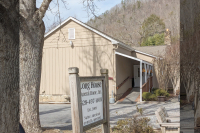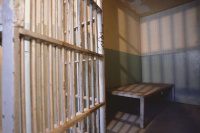Garden records
By Jim Webb
Don’t you wish you kept good records? I sure do. Those Elvis Presley 45’s, purchased the first day they hit the record store, would probably be worth a fortune now. Oh, well, what did I know in the late fifties?
Good garden records, on the other hand, will probably be of little value to anyone but you. But after a few years you’ll find them to be invaluable. You will have a healthier, more productive garden and, as a bonus, it’ll look prettier.
So far this sounds like as much fun as an insurance company questionnaire, right? Be patient. Recordkeeping can be a pleasant activity. Equipment and supply requirements are minimal. You probably already own the most expensive item you will need: a good, comfortable, weather-resistant chair. An end table to hold your herbal iced tea or other libation is also useful. (An inverted bushel basket works fine and also functions as a slug trap.)
Place your chair and table slap dab in the middle of your garden. Or if you have a spot on the east side of your plot that combines views of the garden, the distant mountains, and the sunset, that’s perfect!
Next, you’ll need a pencil, some 8 1/2 x 11 paper and a loose-leaf notebook. Draw a map or maybe several maps of your garden area. Do not hire a surveyor; just doodle the whole thing on one sheet of paper for starters.
Unless your garden is real small, you’ll quickly discover the need to split your map into individual maps for each bed or row. My garden is a big rectangle split into quarters. Fencing around the garden is designed to, at least momentarily, slow down the rabbits, dogs, cats, etc., and to provide trellising for assorted stuff. I have a map for each of these quarters with a title and a space to write in the year. My maps are drawn, more or less, to scale.
Don’t worry about all the paper you use until you get your maps just right. All trial efforts can be composted, or wadded up and thrown on the floor to entertain the cats for a few days. Once you’ve gotten your maps just like you want them, DON’T USE ‘EM! That’s right, do not use them. Photocopy them and use the copies for each year’s garden. Just don’t forget to write in the year.
Before the season starts the maps help you to plan how many plants you can use in the available space. Then once planting begins record what you grew in which area and when. On my maps I write in what I planted, source, whether it was seeds or transplants, the planting date and an estimated date to begin harvesting. For example: “Blue Lake pole beans, Park Seed, seeds, 5/15/2009, 7/11/2009.” You will also want to record what sort of results you had.
Also write down what you did to that soil. I’m a compost fanatic, but I never have enough to cover the entire garden. So when I put compost on a particular bed, I outline that bed on my map with a bright colored highlighting marker. With several years of maps available, the last time a bed was composted is easy to see at a glance. Using different color highlighters, you can do the same thing for liming, spraying beneficial nematodes, or whatever. I also note the date I mulch a bed and what sort of mulch I used. Do the same for any cover crops. If I can find the time for a fall crop, I’ll do another map for those plantings.
Obviously all this information won’t fit on my nice little maps, so I keep a journal of a page or two for each crop. I list the type of plant, the source, when the seed was started or cuttings rooted, when transplanted and where planted. I also try to note when I first spot bug or disease problems and what, if anything, I did about it. Dates for first and last harvest are also noted if I remember. Write notes about anything else you think might prove useful, including last and first frost dates.
If you’re growing for dollars, some of these records will help make your tax return preparation painless. And, on the off chance that you are ever audited by any tax folks, good records are major proof that you are not some starry-eyed, herb sniffin’ hobby gardener but are, indeed, a serious profit-oriented business person.
Remember that nobody but you will ever read your garden notes unless you turn out to be another Henry David Thoreau. Had he known his writings would eventually be read by others, he might well have left out that he still took his laundry home for Momma to wash.
Jim Webb is a Master Gardener Volunteer and a long time tailgate marketer in Haywood County. For more information call the Haywood County Extension Center at 828.456.3575.





